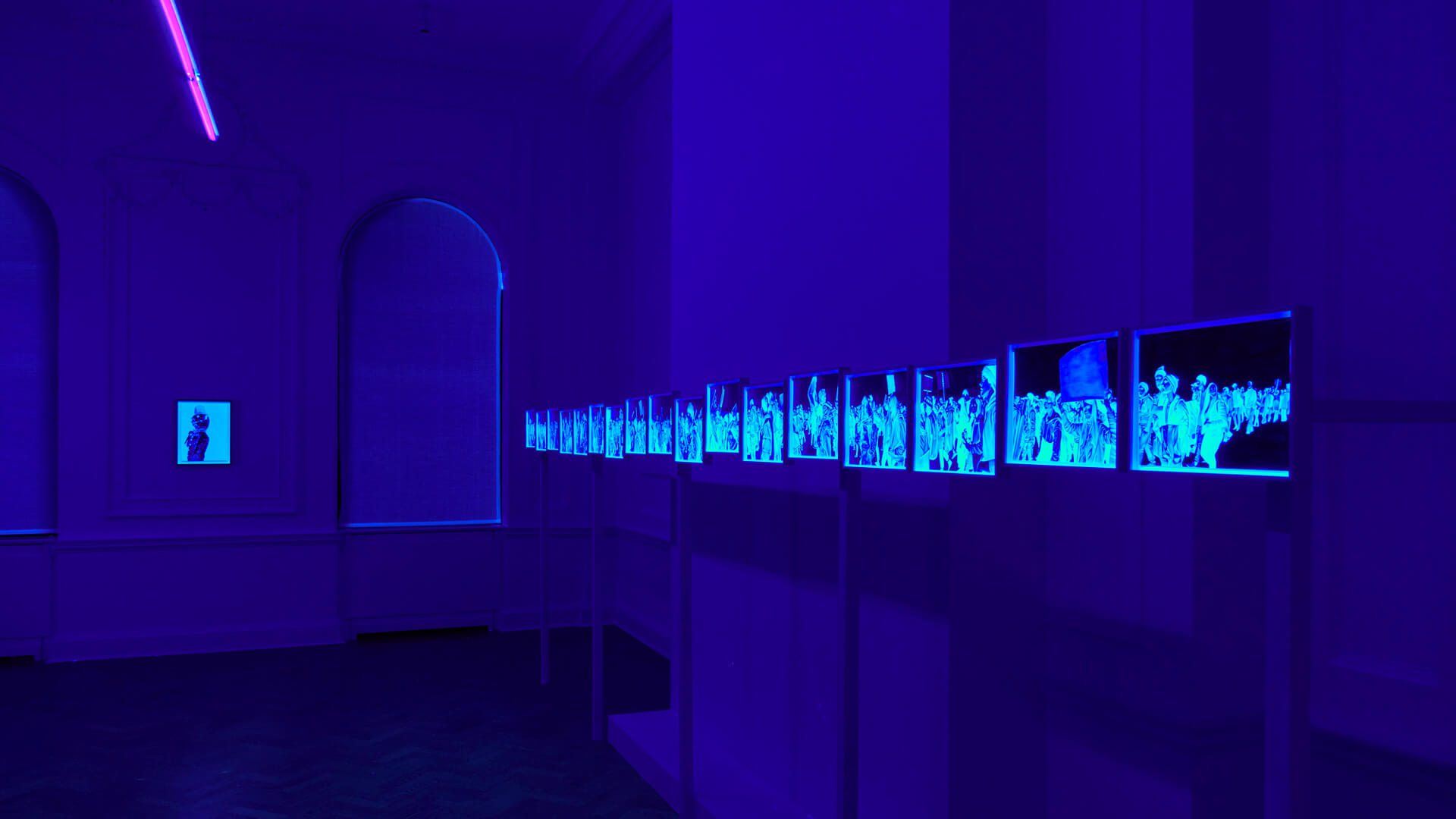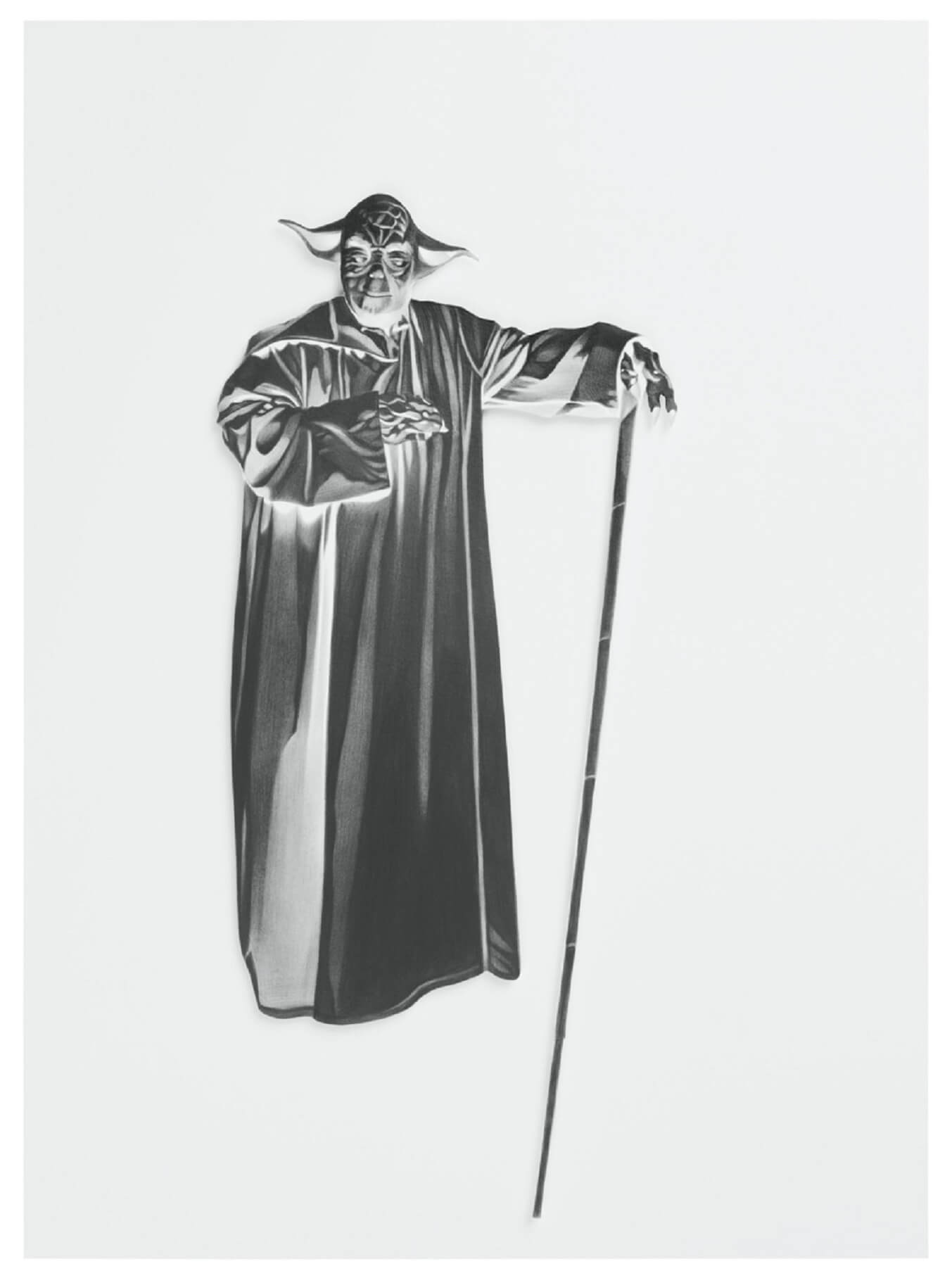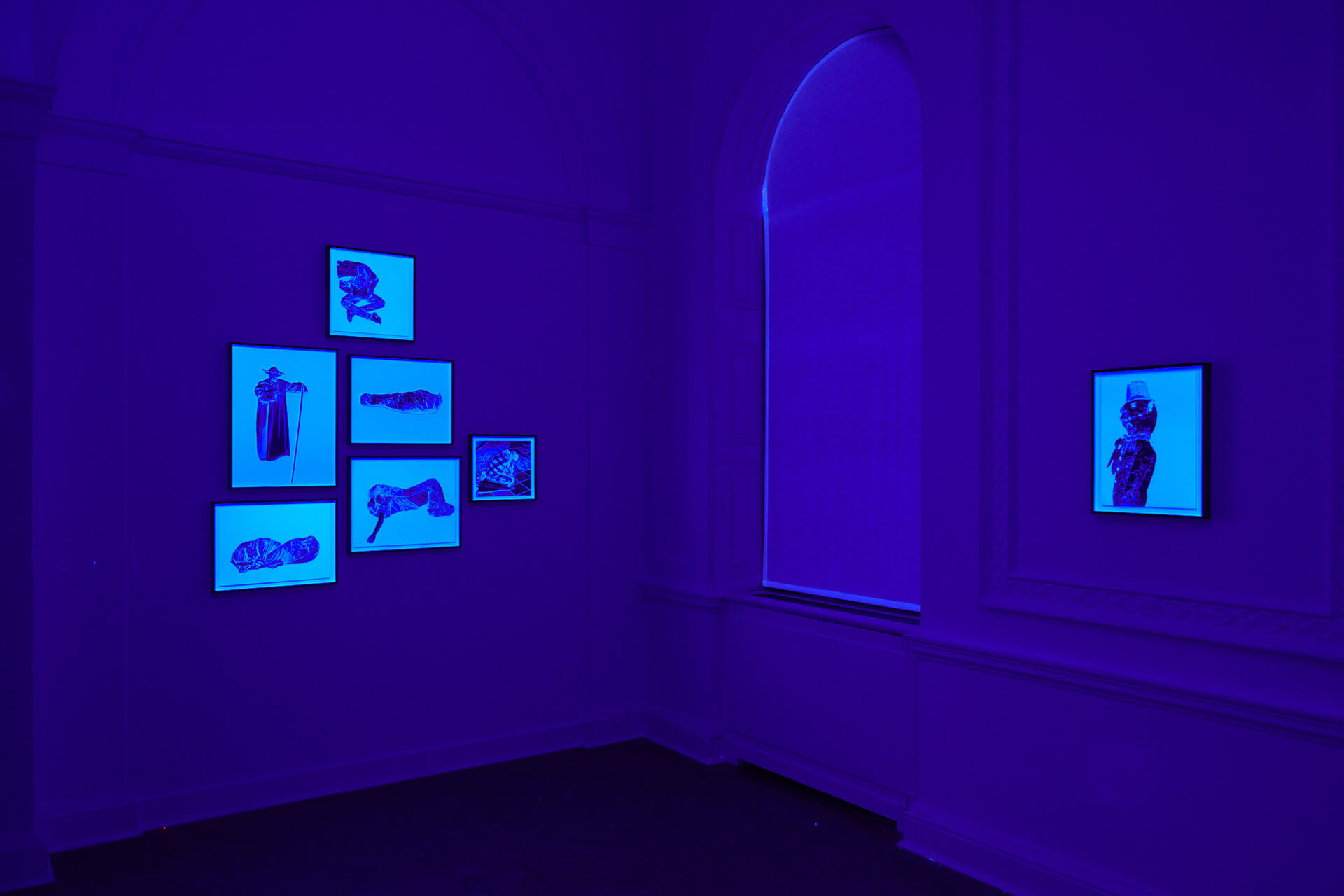
Marc Brandenburg's exhibition 'Snowflake' explores life at the fringes of society

Snowflake at Galerie Thaddaeus Ropac, London - referencing Chuck Palahniuk’s novel Fight Club - is an immersive, dystopian journey through the underbelly of human society.
Strolling through the streets of Berlin, the long walks to which artist Marc Brandenburg has become accustomed over the years, is where his art begins. Always attuned to the violent underbelly that exists beyond the periphery of a heedless middle-class eye - street protests, drug users, homelessness, the covert exchange of a bribe, or a sudden flare up - become Brandenburg's subjects; fragmented vignettes of motifs like “sexism, homophobia, racism, different forms of addictive behaviour, or excess,” he says, in an interview with STIR. Much of this makes up Snowflake, his exhibition at Galerie Thaddaeus Ropac in London.
These goings-on are largely unobserved, existing in their own Neverland, but to Brandenburg, it is second nature, he says, "to constantly document my surroundings, these days more than ever since the invention of the smartphone." It's a carryover too, perhaps of a troubled childhood, where always anticipating violence hones one's own primal instincts. “Growing up with a violent stepfather certainly had a hand in bringing out the artist in me,” he says. Brandenburg's disjointed figures leaping out with an eerie glow from a black-lit room are fragments of the primal abyss, gazing, as Nietzsche predicted, back at those who peer at it.
The otherworldly experience that finally greets the viewer is the culmination of a long process, one that is uniquely his own. It does not seem complex to him, Brandenburg says, rather "a gradual process which took place over numerous years and the work just kept evolving as a result of this process." It's a process refined by hard experience, resulting in art that does not come with the moral trappings of life in a liberal arts university, or of discourse held with the air of looking down, ensconced high in a castle, at the human squalor far below.
This fierce individualism lends itself rather well, then to the name Snowflake, which takes its inspiration from Chuck Palahniuk's 1996 cult classic, Fight Club. "You are not a beautiful and unique snowflake," Palahniuk writes. "Our culture has made us all the same. No one is truly white or black or rich, anymore. We all want the same."
The advent of social thought into mainstream discourse has made for a rather watered-down, family-friendly re-telling of real suffering, a new Victorianism, Palahniuk remarked in 2017, earning himself much disfavour. Radical ideas may find themselves as casualties in mainstream progressive thought, where, "everyone wants to wear artificially unique faded jeans," as Brandenburg puts it. Counterculture has given way to a new consumerism. Back in the late 70s, though, when he struck out on his own for the first time, barely an adolescent into the midst of a thriving punk culture, individualism was the order of the day. Berlin was at that time a kind of utopia - social welfare was enough to make ends meet and a subculture filled with radical ideas flourished. Artists flocked to Berlin and nightclubs mushroomed, where every evening people united in revelry and a common call to freedom.
Music and clothes became an important means of expression in punk culture, says Brandenburg. It led to an interest in fashion too - in Camouflage Pullovers (1992-2018), Brandenburg presents a set of sweaters with woollen head masks attached. They come in four ethnicities - a nod to the ongoing debates on racism and ethnic subversion. It's a disconcerting experience and Brandenburg concurs - "It was important to give every ethnicity the possibility to slip into someone else's skin and to feel the terror of that idea."
In Snowflake, he says, the work is a culmination of what he has "been preoccupied with for the last couple of years. It is impossible to speak on behalf of the observer... I like to keep things open to interpretation, the importance lies in creating visibility”. In essence, they are pencil drawings but Brandenburg's process also encompasses photography, performance and installation. People in photographs are taken out of context and reaffixed in a freeze frame, with the UV lighting casting an otherworldly glow. I concur with Brandenburg, Snowflake is an experience, for which mere commentary cannot suffice.
It’s Andy Warhol, William Burroughs and Fight Club, all rolled into one. Sort of. As a child, Brandenburg found his escape in art, from Looney Tunes to the Impressionists, from living in America to thriving in the streets of Berlin. What manifests in his art, however, is fiercely his own – here, social constructs are laid bare as mere artifices, fragile holdings for the all-powerful instinct that lies just beneath the surface.
Snowflake was on view at Galerie Thaddaeus Ropac in London from February 6-April 18, 2020, and is now on display at Galerie Thaddaeus Ropac in Paris Marais till September 05, 2020.

Protests, street performances, homelessness and addictions give glimpses of life on the fringe, through Brandenburg’s striking drawings
Image Credit: Jens Ziehe, Courtesy of Galerie Thaddaeus Ropac

Untitled, pencil on paper; Snowflake takes its title from Chuck Palahniuk’s 1996 cult classic, Fight Club
Image Credit: Jens Ziehe, Courtesy of Galerie Thaddaeus Ropac

Brandenburg’s art is fueled by motifs of social inequality, homophobia and racism
Image Credit: Jens Ziehe, Courtesy of Galerie Thaddaeus Ropac

Installation view of Snowflake by Marc Brandenburg at Galerie Thaddaeus Ropac in London
Image Credit: Ben Westoby, Courtesy of Galerie Thaddaeus Ropac